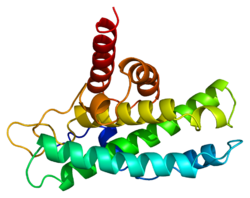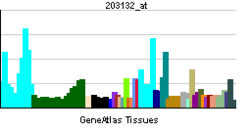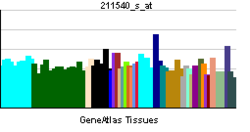|
Senior Member
Join Date: Apr 2008
Location: Sunny San Diego
Posts: 2,214
|
Re: a Game Changer? how about if we could detect early& prevent invasion of her2+ DC
Interestingly - the Stomach channel of Asian Healing Arts starts at the eye and a channel descends through the center of the breast. The meridian ends on the 2nd toe.
Many try to explain the concept of "Qi" pronounced "Chi". A simply way of explaining would be as energy, or life force energy. Qi ends up being a catch-all phrase to explain the different forces of life at work in the body.
I love western science. And I love the mystic qualities of eastern medicine which has developed from centuries of observation.
The phrase Integrated Medicine is used when western and eastern modalities are used together.
I think it is studies like these that will bring to light more and more of the science behind Eastern medicine.
So back to the Western front . . . I found this on Wikipedia:
Quote:
Retinoblastoma protein
From Wikipedia, the free encyclopedia
Jump to: navigation, search
"RB1" redirects here. For the automobile, see Red Bull RB1.
Retinoblastoma 1 
PDB rendering based on 1ad6. Available structures PDB Ortholog search: PDBe, RCSB [show]List of PDB id codes Identifiers Symbols RB1; OSRC; RB; p105-Rb; pRb; pp110 External IDs OMIM: 614041 MGI: 97874 HomoloGene: 272 ChEMBL: 5288 GeneCards: RB1 Gene [show]Gene Ontology RNA expression pattern   More reference expression data Orthologs Species Human Mouse More reference expression data Orthologs Species Human Mouse
Entrez 5925 19645
Ensembl ENSG00000139687 ENSMUSG00000022105
UniProt P06400 P13405
RefSeq (mRNA) NM_000321 NM_009029
RefSeq (protein) NP_000312 NP_033055
Location (UCSC) Chr 13:
48.88 – 49.06 Mb Chr 14:
73.18 – 73.33 Mb
PubMed search [1] [2]
This box:
The retinoblastoma protein (abbreviated pRb, RB or RB1) is a tumor suppressor protein that is dysfunctional in several major cancers.[1] One function of pRb is to prevent excessive cell growth by inhibiting cell cycle progression until a cell is ready to divide. It is also a recruiter of several chromatin remodeling enzymes such as methylases and acetylases[citation needed].
pRb belongs to the pocket protein family, whose members have a pocket for the functional binding of other proteins.[2][3] Should an oncogenic protein, such as those produced by cells infected by high-risk types of human papillomaviruses, bind and inactivate pRb, this can lead to cancer.
Contents
Name and genetics
In humans, the protein is encoded by the RB1 gene located on 13q14.1-q14.2. If both alleles of this gene are mutated early in life, the protein is inactivated and results in development of retinoblastoma cancer, hence the name Rb. Retinal cells are not sloughed off or replaced, and are subjected to high levels of mutagenic UV radiation, and thus most pRB knock-outs occur in retinal tissue (but it's also been documented in certain skin cancers in patients from New Zealand where the amount of UV radiation is significantly higher).
Two forms of retinoblastoma were noticed: a bilateral, familial form and a unilateral, sporadic form. Sufferers of the former were 6 times more likely to develop other types of cancer later in life.[4] This highlighted the fact that mutated Rb could be inherited and lent support to the two-hit hypothesis. This states that only one working allele of a tumour suppressor gene is necessary for its function (the mutated gene is recessive), and so both need to be mutated before the cancer phenotype will appear. In the familial form, a mutated allele is inherited along with a normal allele. In this case, should a cell sustain only one mutation in the other RB gene, all pRb in that cell would be ineffective at inhibiting cell cycle progression, allowing cells to divide uncontrollably and eventually become cancerous. Furthermore, as one allele is already mutated in all other somatic cells, the future incidence of cancers in these individuals is observed with linear kinetics.[5] The working allele need not undergo a mutation per se, as loss of heterozygosity (LOH) is frequently observed in such tumours.
However, in the sporadic form, both alleles would need to sustain a mutation before the cell can become cancerous. This explains why sufferers of sporadic retinoblastoma are not at increased risk of cancers later in life, as both alleles are functional in all their other cells. Future cancer incidence in sporadic Rb cases is observed with polynomial kinetics, not exactly quadratic as expected because the first mutation must arise through normal mechanisms, and then can be duplicated by LOH to result in a tumour progenitor.
RB1 orthologs[6] have also been identified in most mammals for which complete genome data are available.
pRB/E2F-family proteins repression transcription.[7]
Cell cycle suppression
pRb prevents the cell from replicating damaged DNA by preventing its progression along the cell cycle through G1 (first gap phase) into S (synthesis phase).[8] pRb binds and inhibits transcription factors of the E2F family, which are composed of dimers of an E2F protein and a DP protein.[9] The transcription activating complexes of E2 promoter-binding–protein-dimerization partners (E2F-DP) can push a cell into S phase.[10][11][12][13][14] As long as E2F-DP is inactivated, the cell remains stalled in the G1 phase. When pRb is bound to E2F, the complex acts as a growth suppressor and prevents progression through the cell cycle.[3] The pRb-E2F/DP complex also attracts a histone deacetylase (HDAC) protein to the chromatin, reducing transcription of S phase promoting factors, further suppressing DNA synthesis.
Detection
Several methods for detecting the RB1 gene mutations have been developed[15] including a method that can detect large deletions that correlate with advanced stage retinoblastoma.[16]
Activation and inactivation
In the hypophosphorylated state, pRb is active and carries out its role as tumor suppressor by inhibiting cell cycle progression. Phosphorylation inactivates pRb. During the M-to-G1 transition, pRb is progressively dephosphorylated by PP1, returning to its growth-suppressive hypophosphorylated state .[3][17]
When it is time for a cell to enter S phase, complexes of cyclin-dependent kinases (CDK) and cyclins phosphorylate pRb, inhibiting its activity.[2][3][8][18] The initial phosphorylation is performed by Cyclin D/CDK4/CDK6 and followed by additional phosphorylation by Cyclin E/CDK2. pRb remains phosphorylated throughout S, G2 and M phases.[3]
Phosphorylation of pRb allows E2F-DP to dissociate from pRb and become active.[3][8][11] When E2F is free it activates factors like cyclins (e.g. Cyclin E and A), which push the cell through the cell cycle by activating cyclin-dependent kinases, and a molecule called proliferating cell nuclear antigen, or PCNA, which speeds DNA replication and repair by helping to attach polymerase to DNA.[8][10][13]
Rb family proteins are components of the DREAM complex (also named LINC complex), which is composed of LIN9, LIN54, LIN37, MYBL2, RBL1, RBL2, RBBP4, TFDP1, TFDP2, E2F4 and E2F5. There is a testis-specific version of the complex, where LIN54, MYBL2 and RBBP4 are replaced by MTL5, MYBL1 and RBBP7, respectively. In Drosophila both DREAM versions also exist, the components being mip130 (lin9 homolog, replaced by aly in testes), mip120 (lin54 homolog, replaced by tomb in testes), and Myb, Caf1p55, DP, Mip40, E2F2, Rbf and Rbf2. The DREAM complex exists in quiescent cells in association with MuvB (consisting of HDAC1 or HDAC2, LIN52 and L3mbtl1, L3mbtl3 or L3mbtl4) where it represses cell cycle-dependent genes. DREAM dissociates in S phase from MuvB and gets recruited by MYB.
|
|